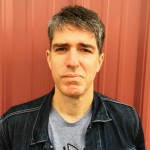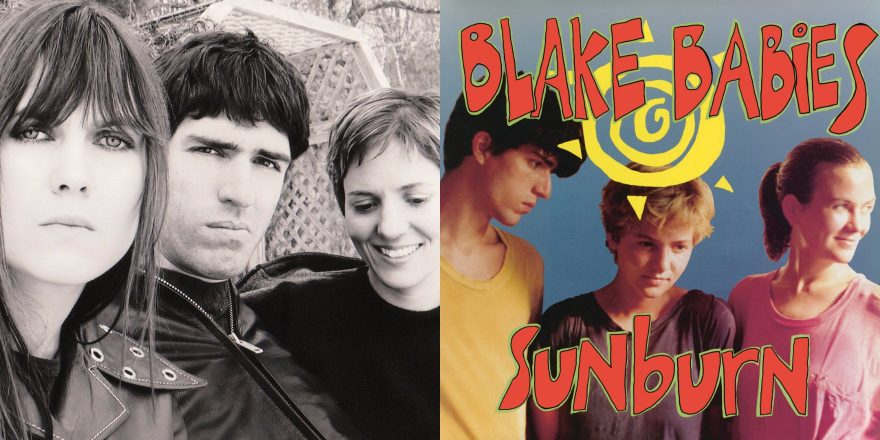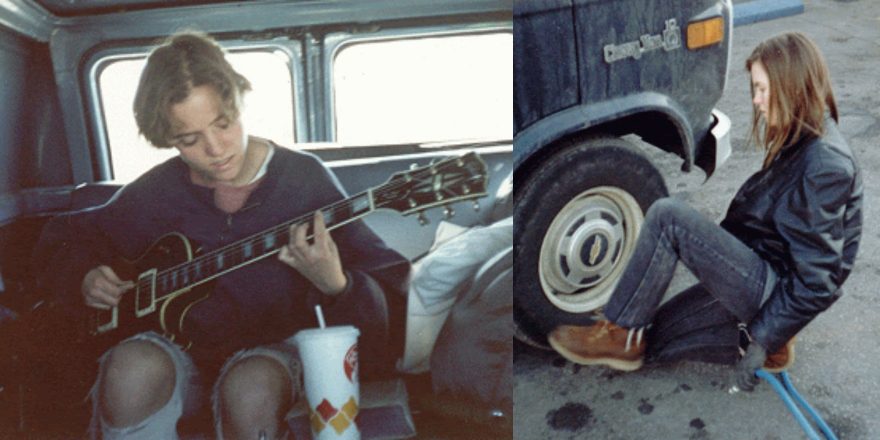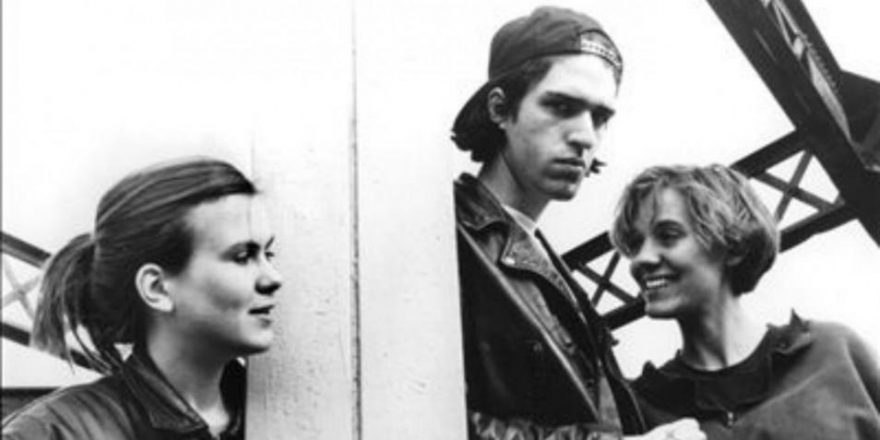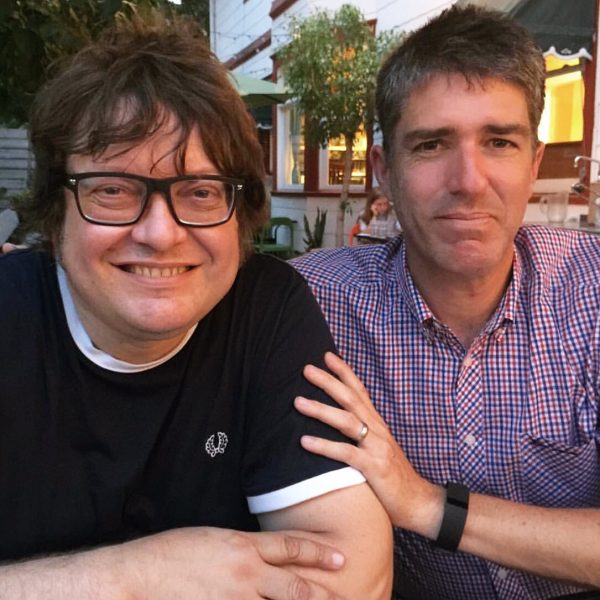
I first met Ed Ackerson in my hometown of Bloomington, Indiana, in the summer of 1990. My band, Blake Babies, had just recorded our defining album, Sunburn. After five years scrapping it out in Boston, I spent that summer doing very little while having the run of my childhood home, with my English professor dad overseas on sabbatical. On the verge of the new album and tour, I had so much to look forward to. Anything seemed possible. Every night out on the town could turn into an adventure.
One of those nights started at the famous college bar, The Bluebird, to see a friend’s opening set. The headliner was a Minneapolis band I didn’t know called The 27 Various. I had no expectations and no plans to stay past the first song or two, but their intense performance drew me in and blew me away. Ed fronted the band with such a commanding presence, a natural rock star. His songs built on simple riffs that exploded into sharp, anthemic choruses, lush and angular, rooted in classic sounds while careening into a future where the weird kids rule the world. It’s one of those rare, exquisite moments when I completely lost myself in the beautiful swirl of sound.
As Ed packed up, I approached and dropped a clumsy line about how they reminded me of The Rain Parade. Ed said, “Oh yeah, my favorite American neo-psych band of the last 10 years, saw their one Minneapolis show in ’82.” Ed quickly reminded me we’d met before. “Remember that Lemonheads show in ‘87 at The Entry? Yeah, I mixed front-of-house for that show.” He apologized if he’d been a jerk, confessing that he considered us a cheap Replacements rip-off… But he loved Blake Babies.
The band had a couple days off, so I invited them to crash with me. Over those couple of summer days, we talked and talked. We drained most of my dad’s booze and got into it on music, books, art, politics, and the weird lifestyle of touring and making records that we’d chosen. We connected on everything. We were two musicians all-in on our dreams, knocking at the door of greatness. We knew we’d be friends forever.
During those heady early days of our friendship, we spoke almost every day. Ed was a star in the Twin Cities scene, but that didn’t prevent him from joining the new band I’d started, Antenna. We constantly sought any way we could collaborate and boost each other. After 27 Various split up, Ed called me to help launch his next band, Polara. He asked me to come to Minnesota to help him make their first album. Without a thought, I jumped in the car and drove 10 hours. That’s how things were back then: we didn’t have anything tying us down. I’d drive 10 hours to play on a record, no problem. But if my best friend needed me to make the album that he hoped to define the rest of his career? I’d have walked to Minneapolis to answer that call. That call led to one of the most thrilling studio experiences I ever had, and an album that I consider a timeless classic.
Polara’s self-titled debut album, released in 1995 on Twin/Tone records, didn’t make Ed the star he deserved to be; but it did open some doors. Ed signed a huge, lucrative record deal with Interscope Records on the back of the promising independent release. He bought a cool old building in Uptown Minneapolis that used to be a greenhouse and flower shop, where he committed to the grind of building a career as a successful major label recording artist.
Over the next several years, things didn’t pan out quite the way we expected for either of us. That “anything is possible” moment led to a series of setbacks as the industry changed. After a few under-promoted releases and with little fanfare, Interscope dropped Polara. Meanwhile, I moonlighted through the mid-’90s as the guitarist for my old Boston friends The Lemonheads as Antenna flamed out after a few albums. Ed continued releasing independent records on his Susstones label, but he focused on the studio. He turned Flowers, fittingly named from the rusty sign advertising the former business, into a commercial facility and a state-of-the-art tool for his formidable production skills. As a last ditch before going back to college, I went to Flowers in late 1998 with my strongest set of songs, hoping for a miracle of a record that could prolong my music-making career.
Those sessions, which became my first real solo album, Vestavia, are among my fondest studio memories. Ed was a taskmaster and we worked hard, but we also laughed a lot. He demanded greatness, but he infused every moment with joy. For those few weeks we’d start the day after noon with a greasy breakfast and gallons of black coffee. We spent the afternoons mapping out the tracks, cracking jokes, setting up microphones, and working out arrangements. After dinner the real work started. We worked until 2 or 3 in the morning building it track-by-track, Ed in the control room with his Fender Bass VI, me bouncing from one instrument to the next, playing almost everything else. As I reached exhaustion trying to play every track, Ed brought in Polara’s drummer, Peter Anderson, to lighten my load. We’d end each night at sunrise, having a celebratory beer in the greenhouse that still flanks the studio. By the end of the sessions, we had a final mix of the best album of my songs I’d ever managed to pull together. Once again, anything felt possible.
Vestavia came out in 1999 and landed with a thud. By the time the album cycle ended, I’d moved to Alabama, gotten engaged to my girlfriend Heather, and decided to go to law school. Ed came to the wedding and brought his new girlfriend Ashley, a local musician with her own well-known Twin Cities rock n’ roll band, The Mood Swings. I’d known Ed through a series of relationships, but things felt different with Ashley. They clearly adored each other, and respected one another’s musicianship. Creative collaboration became an expression of their love for each other. Ed and Ashley married a few years later, and from that time forward we didn’t see each other very often due to distance, work, and eventually our own families. But we always stayed in touch and continued to collaborate as much as we could. But Ed had a successful business and by then I had a law career and young kids — opportunities were rare.
A little over a decade ago, my family moved to Nashville and I found myself part of a community of extraordinarily creative, inspiring musicians. I began to feel the urge to find a path back to songwriting and record-making, and that path would necessarily include Ed and Flowers. I sent Ed some songs I wrote and he responded enthusiastically and encouraged me to commit to another album. It took me years to make any real progress.
Through a chance business meeting in the summer of 2017, I reconnected with an old music scene acquaintance named Gregory Lattimer, a cool, affable guy who happens to be an unbelievably skilled musician and producer. Gregory opened a door for me — in this case to his garage studio he calls Make Sound Good — and we found an easy groove over a series of Saturday afternoon sessions. The work felt effortless, and the realized songs sounded better than I’d imagined. Towards the end of the year, we’d finished six songs with long-distance contributions from Ed. But as I began to see light at the end of the tunnel to a completed album, my life took a turn when I became President of the iconic independent label, Rounder Records. I dove into my work of building a new label roster at a full sprint, and my musical efforts went utterly neglected for several years. All the creative energy I could muster went into my job.
Ed’s life also changed as his happy marriage produced a daughter, Annika, instantly the center of Ed and Ashley’s lives. Ed and I mostly kept up mostly on social media, where I delighted in posts of the happy family enjoying the magical stages of life with a young child. But then I noticed on his posts that Ed suddenly lost a lot of weight. He assured me it was due to his healthy new routine, quitting smoking, cutting back on booze, and riding his bike. Great, I thought…he’s in it for the long haul. But in late 2018, Ed confided that he’d had some bad news about his health: He’d been diagnosed with late stage Pancreatic cancer.
Ed kept his news from everyone except family and a few close friends. We spoke often during his treatment, and he remained characteristically optimistic and upbeat throughout. Ashley, however, tempered Ed’s optimism by letting me know Ed’s odds weren’t good. I prioritized a visit to Minneapolis to see my friend and hopefully to get something done in the studio for my album. I forced myself back to a creative headspace and worked up a new song for my trip to Minneapolis in July, 2019.
When I arrived at Flowers the first evening, I was shocked by how his disease had changed Ed’s appearance. He seemed small and frail, unfamiliar. He was struggling with pain and treatment, but he remained in good spirits. I spent a couple hours making music on toy instruments with three-year-old Annika, studiously avoiding the topic on everyone’s mind.
When I returned the next morning, I found Ed in his iconic producer’s pose: perched in the seat behind his massive SSL console, ready to get to work. He handed me an acoustic guitar — a Harmony Sovereign from the 1960s — and directed me to the studio. I sat down at the microphone, tuned up, and hastily ran through my song… in the wrong key and with the wrong form. I could tell Ed was struggling during his brief window of productive time, so I lied that the take was fine. Ed eyed me skeptically, but agreed to move on.
Ed told me the arrangement came to him in a dream, so I followed his lead. I tracked a subtle drum part, then Ed added a second guitar and some subtle keyboard touches. He’d lost some muscle control in his hands, but he meticulously proceeded and laid down a beautiful harmony guitar part. Over several days of short sessions, we built a coherent track.
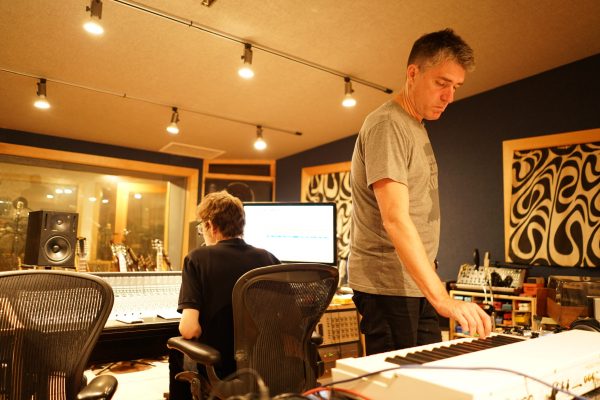
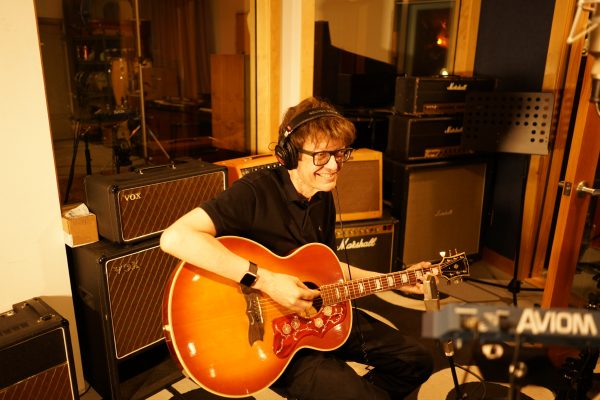
After I sang my lead vocal track, Ed called me into the control room. “I’m not really feeling these words,” he said. “I think you should take this home and start over. I know you’ll find the right words, just take your time.” I said I would, and I hugged Ed tight when I left for the airport that afternoon. He wouldn’t let me say goodbye, because for him it was just another occasion for “see you soon.” But when Ashley and I found time to catch up, she let me know while holding back tears that it probably was goodbye.
Ed passed away on October 4, 2019. Ashley invited me to perform at a celebration of Ed’s life the following February at First Avenue in Minneapolis. My role was pretty daunting: I sang and played guitar with Polara, resurrecting Ed’s role fronting the band. It was such a thrill to pay tribute to my friend through his songs, playing with old friends who share my deep love for Ed and his work. I felt so profoundly connected to the audience, full of musical fellow travelers, friends, fans, and many admirers. It reminded me how much I missed the connection we can only feel through music, and I vowed to find more opportunities to play in public. I committed to finishing the long-neglected album project I’d started back in 2017. Two weeks later, we all went home for the next couple years.
I had a hard time writing anything during COVID lockdowns. Lord knows I tried all the time. I had notebooks full of beginnings of songs that went nowhere. Like most people, I felt depressed, deeply frustrated, and utterly stuck. I thought a lot about the song Ed and I recorded, wondering if it could be salvaged. When the COVID situation settled down briefly in the summer of 2021, I traveled to Minnesota for another glorious Polara tribute set on the 56th anniversary of Ed’s birth. I made arrangements with Ashley to have the track sent, and Gregory miraculously pulled together a workable track for me to sing. For weeks I tried to write words, but nothing came. I had so much to say, but no way to say it.
In an effort to break my writer’s block, I turned to my pandemic notebooks. Among all the self-pity and aimless meandering, I found a line that really summed up how I really felt during those dark days of 2020: “All I need is time away, and something to look forward to today.” In my isolation, I wished for things I’d always taken for granted, the low-key thrill of anticipating future events. I found it hard to experience happiness when I didn’t have anything to look forward to. The line became far more poignant, however, when applied to a person with a loving family and creative community facing the end of their life. In the last conversation I had with Ed during those July sessions at Flowers, he spoke about how excited he was to watch his daughter grow up. He told me how much he looked forward to making more records with me throughout the years. With that small turn of phrase, the rest of the lyrics came together. My greatest wish for my friend: something to look forward to.
That July weekend in 2019 I made a promise to Ashley that I’ll do everything I can to keep Ed’s music alive. That meant boosting his own work, but it also meant finishing our work together so that I can tell these stories. The song tells the story of our friendship, our collaboration, and the commitment to stoking the fires we lit back in 1990 when we thought we were on our path to glory. It’s my commitment to making music Ed would respect, and to paying it forward because he can’t be here to do it himself. Ed was a lifer, as a musician and an encourager and booster of many creative and talented artists. If he’d lived to 100, he would still be doing what he does every day: making music, encouraging others, and building community. I’ll honor my friend by continuing to walk in his shoes — by being kind, by encouraging others, and by putting in the work to keep making the best music I can, whether or not anyone is listening.
In early 2022 I fulfilled my promise to my friend by writing and recording a few more songs, along with a cover of my favorite Polara song, “A+B=Y” to complete the album. I called my friend and mentor, producer/engineer Paul Mahern, another lifelong collaborator who has had a profound impact on my work to mix and master. Paul polished the tracks to a point I know Ed would be proud of, and I can’t wait to share the music soon.
I have a lot to look forward to these days. My kids are growing up, and I’m grateful to Ed for inspiring me to start making music in public again. I’m sharing our track “Something To Look Forward To,” recorded in July 2019 and completed in early 2022. It isn’t perfect, we did our best. But I think it captures the intense vibe in the studio that day. I encourage anyone reading this to discover Ed’s work, as a producer of legendary acts such as The Jayhawks, Motion City Soundtrack, and Golden Smog; and as a great writer, musician, singer, and recording artist in The 27 Various, Polara, BNLX, and solo albums. His music will live on, on records, platforms, and in the hearts of so many he touched in his brilliant, far-too-short life.
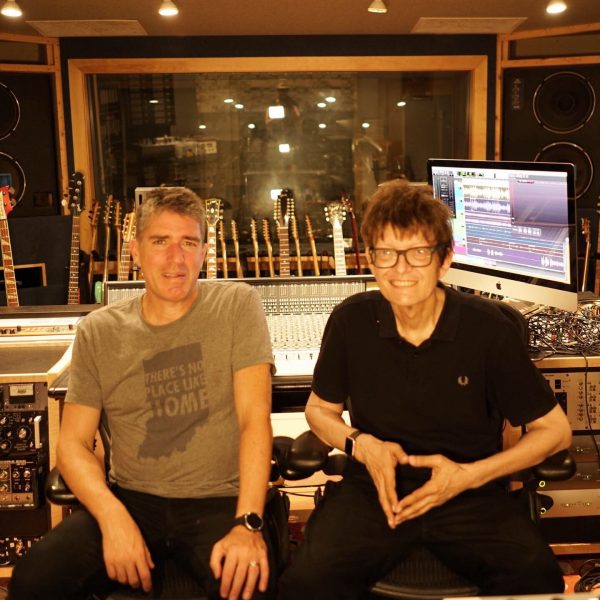
“Somthing To Look Forward To” is streaming now.



